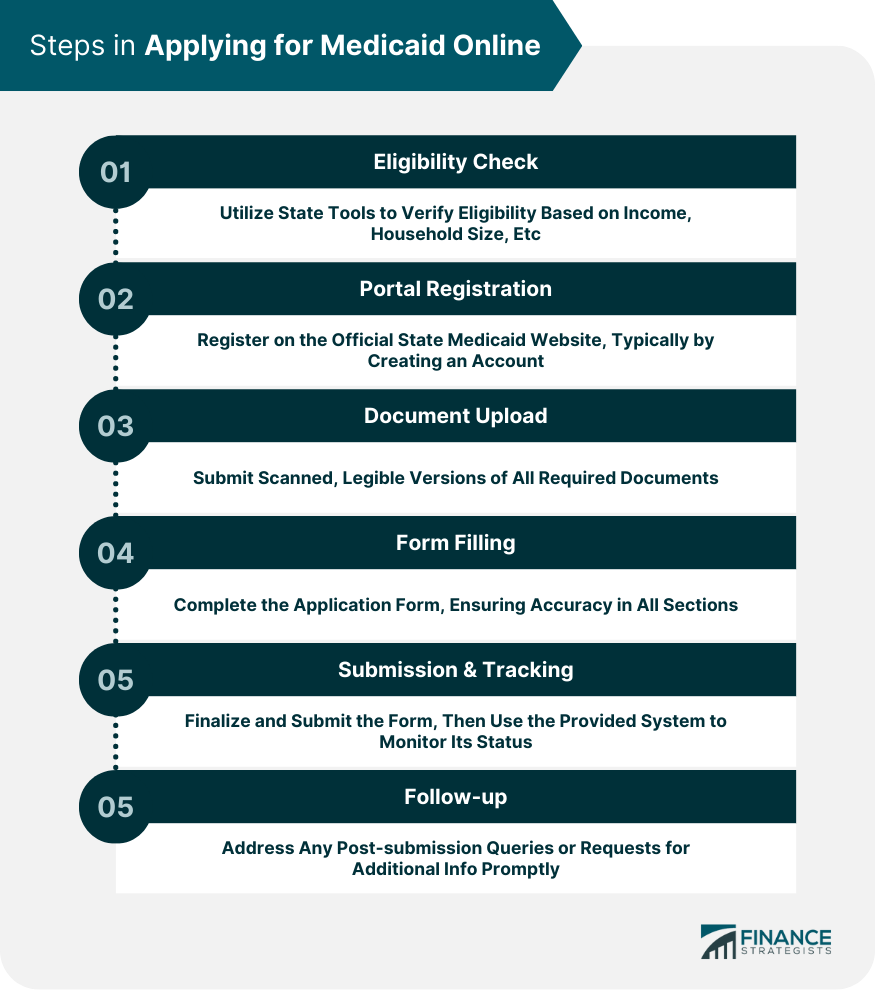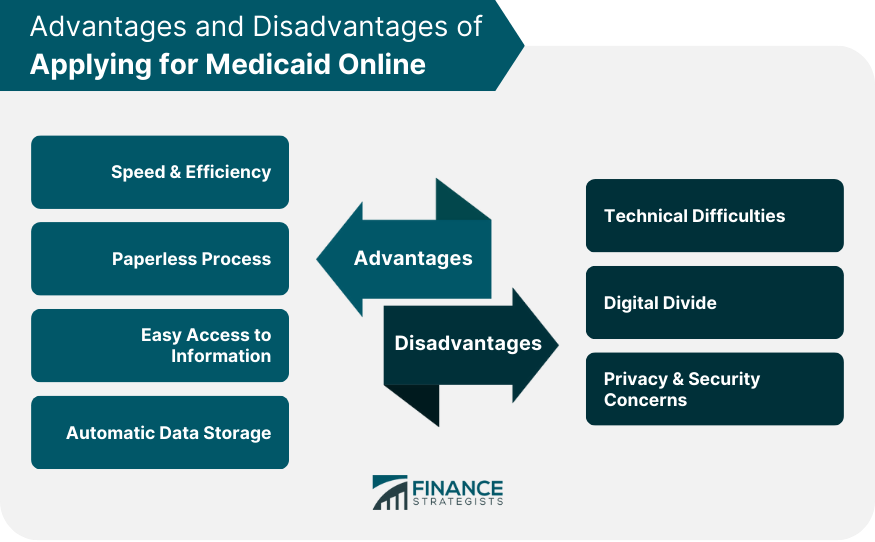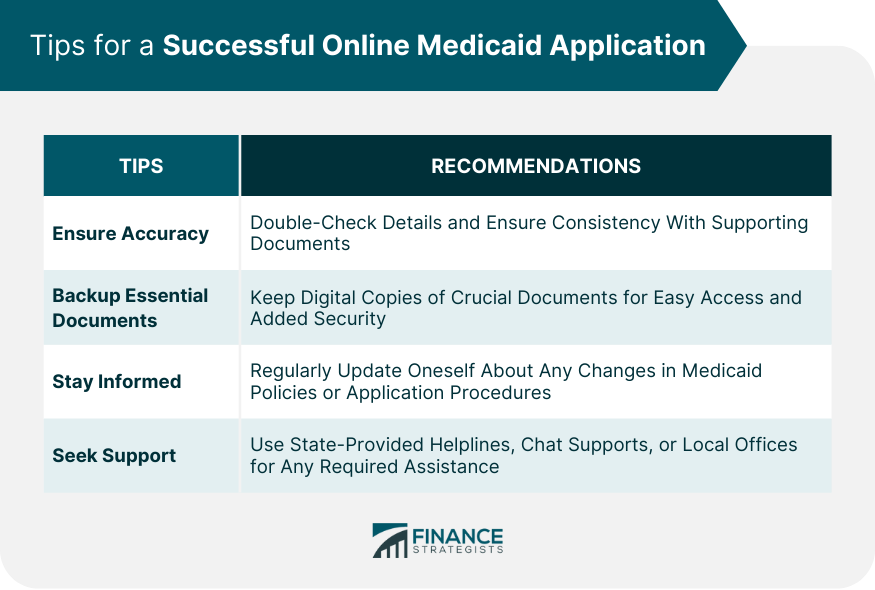Medicaid, a crucial lifeline for many in the United States, has modernized its application processes to meet the demands of an increasingly digital world. Applying for Medicaid online refers to the digitized system that enables prospective beneficiaries to initiate and complete their enrollment into the Medicaid program through the internet. This process has eliminated the need for lengthy paper-based applications and repeated trips to local offices. It streamlines the enrollment procedure, bringing convenience and efficiency into the lives of applicants. The main purpose behind transitioning Medicaid applications to an online platform was to increase accessibility. The traditional ways of applying could be cumbersome, involving extensive paperwork, prolonged wait times, and sometimes even the challenges of physical accessibility. Providing an online platform not only makes the process faster but it also opens the door for many who might have found it challenging to apply in person due to various constraints. Before starting, utilize online tools provided by most states to verify eligibility based on factors like income, household size, and more. Visit your state's dedicated Medicaid website and create an account or register. This often involves setting up a username and password. Scan and upload all required documents. Ensure that scanned copies are clear and legible. Accurately fill out the application form, double-checking every section to avoid discrepancies. Once the form is filled, submit it. Most platforms will provide a tracking system to monitor the application's status. Post submission, there might be requests for additional information. Promptly addressing these requests can expedite the approval process. One of the most significant advantages of online applications is speed and efficiency. Gone are the days of waiting in long queues at local offices or mailing physical application forms and waiting for weeks. Online applications can be done at any time, from any place with internet access. This convenience is invaluable for those who might have work obligations, childcare duties, or any other responsibilities that make traditional application processes inconvenient. Another profound benefit is the shift to a paperless process. Not only is this environmentally friendly, reducing the amount of paper waste, but it also minimizes the risk associated with lost or misplaced documents. In addition, the digital nature of online applications means that resources, FAQs, and guidelines are just a click away. This easy access to information empowers applicants, ensuring that they have all the necessary knowledge to successfully complete their application. Moreover, online applications automatically save and store data, which can simplify record-keeping and provide an instant digital confirmation of the submitted application. Like any digital advancement, online Medicaid applications are not without their challenges. One notable concern is technical difficulties. Websites may experience downtimes, software glitches, or other issues that could hamper the application process. While these technical hiccups are typically resolved quickly, they can cause delays and frustration for applicants relying on timely submissions. Furthermore, the digital divide remains a pressing concern. While many enjoy seamless internet access and are digitally literate, a significant portion of the population may not have reliable internet access or might not be comfortable navigating online platforms. This can pose challenges, especially for older adults or those living in remote areas. Lastly, digital platforms come with inherent privacy and security risks. Although Medicaid application portals are equipped with robust security measures, there's always a potential for data breaches or mishandling of personal information, which can deter some from using the online option. Accuracy cannot be stressed enough when applying for Medicaid online. A small oversight or error in your application can lead to delays or even denials. It's essential to double-check every detail, ensuring that all provided information aligns with the documents you have. Consistency and truthfulness are key. Inaccuracies, even if unintentional, can create complications down the road. Backing up essential documents is another critical step. It's advisable to create digital copies of all vital documents you might need for the application. This not only ensures that you have everything on hand when filling out the application but also means you have backups should you need to provide further proof or evidence at any stage of the process. Regularly staying informed about any changes in Medicaid eligibility or application procedures will ensure you're always ahead of the curve. Lastly, don't hesitate to seek support. Most states offer helplines, chat support, or even local Medicaid offices where prospective applicants can get guidance, clarifications, or any other assistance they might need during the application process. Applying for Medicaid online marks a significant stride in the evolution of healthcare accessibility, shifting from cumbersome paperwork to a streamlined digital process. This digital transformation emphasizes speed, convenience, and a broader reach, allowing more people to access vital health services without traditional hurdles. However, like all technological advancements, it isn't devoid of challenges, from technical glitches to the ongoing digital divide. As the process becomes increasingly user-centric, it's essential for applicants to be prepared, accurate, and proactive. Backing up documents, staying updated on policy changes, and seeking assistance when needed can make the difference between a seamless application and potential delays. In this digital age, the online Medicaid application process underscores a future where healthcare accessibility merges with technological convenience.What Is Applying for Medicaid Online?
Steps in Applying for Medicaid Online
Eligibility Check
Portal Registration
Document Upload
Form Filling
Submission & Tracking
Follow-up

Advantages of Applying for Medicaid Online
Speed and Efficiency
Paperless Process
Easy Access to Information
Automatic Data Storage
Disadvantages of Applying for Medicaid Online
Technical Difficulties
Digital Divide
Privacy and Security Risks

Tips for a Successful Online Medicaid Application
Ensure Accuracy
Backup Essential Documents
Stay Informed
Seek Support

Conclusion
How to Apply Medicaid for Online FAQs
To begin applying for Medicaid online, first gather all necessary documents. Then, visit your state's official Medicaid website to initiate the application process.
Yes, applying Medicaid online is just as valid as applying in person, provided you use the official state Medicaid website and follow the necessary steps.
If you face issues during the online application, refer to the website's help section or contact the provided helpline for assistance.
The time varies based on individual situations, but the online application itself can often be completed within an hour. However, the approval time can range from a few days to several weeks.
Most state Medicaid online platforms allow users to save their progress and return to complete the application later. Ensure you save your work before exiting.
True Tamplin is a published author, public speaker, CEO of UpDigital, and founder of Finance Strategists.
True is a Certified Educator in Personal Finance (CEPF®), author of The Handy Financial Ratios Guide, a member of the Society for Advancing Business Editing and Writing, contributes to his financial education site, Finance Strategists, and has spoken to various financial communities such as the CFA Institute, as well as university students like his Alma mater, Biola University, where he received a bachelor of science in business and data analytics.
To learn more about True, visit his personal website or view his author profiles on Amazon, Nasdaq and Forbes.











